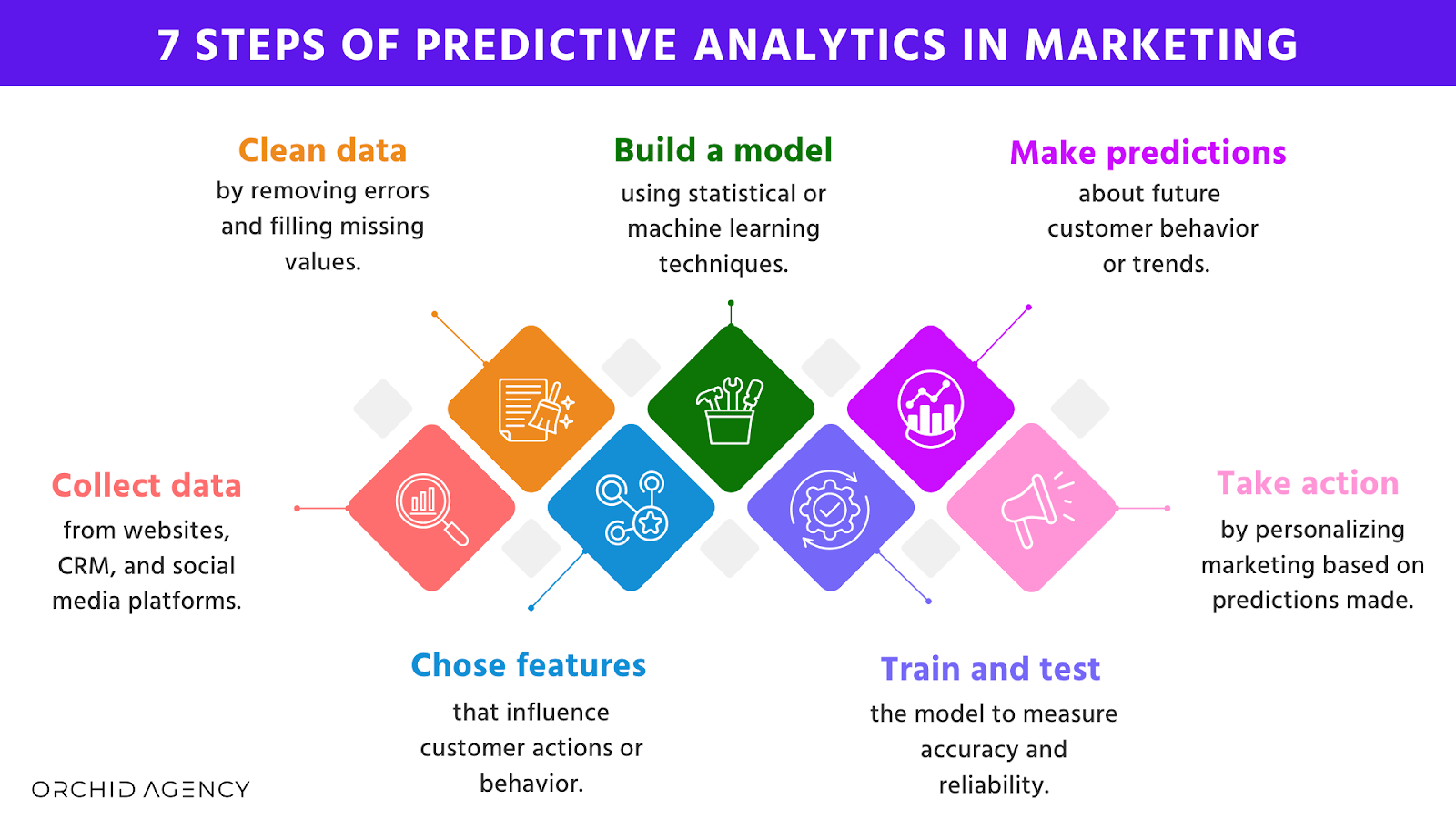5 Ways to Fuel Growth with Predictive Analytics in B2B Marketing

Data is the core of modern marketing. This is why predictive analytics is emerging as a game-changer, especially for B2B marketers who are focused on smarter, faster decision-making. By analyzing past behavior, predictive analytics helps marketing teams forecast future customer actions, improve campaign results, and boost revenue potential.
The global predictive analytics market is projected to reach $41.52 billion by 2028, growing at a CAGR of 24.5% from 2021 to 2028.
Whether you’re a marketing operations leader or part of a growth-focused team, understanding how predictive analytics fits into your marketing strategy is essential for staying competitive.
What is Predictive Analytics?
Predictive analytics uses historical data, machine learning, and artificial intelligence to identify patterns and predict future outcomes. For marketing, it means using insights from past customer behavior, engagement, and buying signals to forecast what prospects are likely to do next.

Here’s a bonus blog on data-driven strategies for 2025.
Why Do Predictive Analytics Matter in B2B Marketing?
When buying cycles are complex and customer journeys are long, timing and precision are everything. Predictive analytics helps marketing teams:
- Qualify leads more accurately by predicting which accounts are most likely to convert
- Optimize campaigns by sending the right message at the right time
- Forecast pipeline growth to better align with sales
- Improve personalization at scale based on data-driven insights
- Reduce waste by focusing on high-impact tactics and channels
Predictive tools give your marketing ops team a strategic edge by transforming raw data into action.
5 Predictive Analytics Strategies You Can Use Today
Predictive analytics isn't just a future-forward concept; it’s transforming how marketers make decisions every day. In fact, 91% of top marketers say predictive analytics is critical to marketing success .
1. Lead Scoring Models
Use predictive scoring to prioritize leads based on how likely they are to convert. Instead of relying on gut feeling or manual point systems, predictive lead scoring uses AI to weigh behaviors and firmographic data that truly indicate buying intent.
Companies that use predictive lead scoring see a 45% lift in lead conversion rates, according to Aberdeen Group, aka less time chasing cold leads and more time closing deals.
2. Churn Prediction
Use behavioral trends and engagement patterns to identify accounts at risk of disengaging. Marketing teams can proactively re-engage customers with the right content or support before churn happens.
A study by Bain & Company shows that increasing customer retention by just 5% can boost profits by 25% to 95%. Predictive churn models give you a fighting chance to retain high-value customers before it’s too late.
3. Content Recommendations
By analyzing which content different accounts engage with like case studies or blog posts, predictive systems can surface personalized, high-value content for each stage of the buyer’s journey.
According to Demand Gen Report, 87% of B2B buyers say online content has a major or moderate impact on vendor selection. Predictive content recommendations help ensure that the content each stakeholder sees aligns with their role and funnel stage.
4. Campaign Optimization
Predictive analytics can analyze past campaign performance and audience data to recommend which tactics, channels, or creatives will perform best. This allows you to spend smarter, not more.
A recent Salesforce study found that marketers who use AI for campaign optimization see a 22% increase in marketing ROI on average.
5. Revenue Forecasting
Use predictive models to estimate future revenue based on pipeline health and engagement metrics. This helps align marketing with sales and finance, improving planning and resource allocation.
Gartner reports that predictive revenue forecasting can improve forecast accuracy by up to 20% compared to traditional methods. That means fewer surprises and more confidence in your strategic planning.
What Type of Predictive Analytics Systems Are Best for Startups and SMBs?
Startups and SMBs should focus on tools that are affordable, easy to use, and integrate well with existing systems. Tip- Start with one use case, like lead scoring, and expand as you grow.
- CRM-Integrated Tools
e.g., HubSpot, Zoho CRM, Freshsales
→ Built-in lead scoring & churn prediction with no extra setup. - No-Code Predictive Platforms
e.g., Akkio, Obviously.ai, Pecan AI
→ Build models without needing a data team. - Marketing Automation with AI
e.g., ActiveCampaign, Mailchimp Pro, Brevo
→ Use predictive features to personalize content and timing. - Revenue Intelligence Tools
e.g., Clari, InsightSquared, BoostUp
→ Forecast revenue and identify at-risk deals.
What’s Next for Predictive Analytics in Marketing?
As AI tools become more sophisticated, predictive analytics will become even more embedded into marketing workflows—from campaign planning to real-time personalization. Some platforms are already integrating AI models that support these efforts.
The future is clear: marketers who embrace predictive insights will gain a serious competitive advantage.
Need help integrating predictive analytics into your marketing strategy or tech stack? Talk to us—let’s build a smarter, data-driven marketing engine together.
Please reach out for questions.


